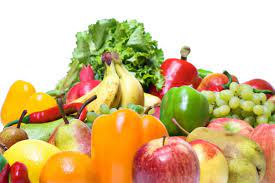
Firstly, introducing Auscrops, a wonderful market vending company bridging farmers and customers together through market vendors. Click here to find out more about What is the Difference Between Fruit and Vegetables as well fruit and vegetable offers.
What is the Difference Between Fruit and Vegetables
When you think of fruits and vegetables, you may consider them as one and the same. After all, they are both healthy, nutritious, and colorful foods that we all need to consume to maintain a healthy lifestyle. But contrary to popular belief, fruits and vegetables are not the same. They differ in so many ways, from their taste and texture to their nutritional value and purpose. And in this blog post, we’ll explore these differences to help you make informed decisions when shopping for fruits and vegetables.
Definition of Fruit and Vegetables
Both plant-based foods, but they have different characteristics. Fruits typically have seeds in them, while vegetables are usually leaves, stems, roots, or flowers of a plant. The definition of fruit is the mature ovary of a flowering plant, usually containing seeds. On the other hand, vegetables are edible parts of a plant, including roots, stems, leaves, flowers, and tubers.
Nutritional Differences
They have different nutritional values, and it’s worth knowing what you’re eating and how it can benefit your body. Fruits are generally high in natural sugars, vitamins, and fiber, and they provide excellent energy to fuel the body. Vegetables, on the other hand, are low in calories, rich in fiber, and provide a wide range of micronutrients, vitamins, and minerals that support optimal health. A good balance of both fruits and vegetables in your diet can help maintain a healthy weight, prevent chronic diseases, and boost the immune system.
Taste and Flavor Profile
Taste and flavor differences between them can be subjective, as it depends on individual preferences. Fruits are known for their sweetness and are often used in dishes like desserts, smoothies, and juices to add a natural sweetness. Vegetables, however, come in varying flavors, from bitter to savory and sweet, and can be incorporated into soups, stews, salads, and other dishes for added health benefits.
Culinary Uses
Prepared and consumed in different ways. Fruits can be eaten raw, cooked, juiced, pureed, or canned, while vegetables can be roasted, sautéed, boiled, baked, grilled, or steamed. With the right cooking methods, both fruits and vegetables can provide amazing flavors and textures that complement different recipes and meals.
Storage Differences
Fruits and vegetables have different storage needs. Fruits tend more perishable and should store in a cool, dry place or refrigerated to preserve freshness. Some fruits, like bananas and avocados. Can ripened at room temperature but should store in the fridge once ripe. Vegetables have different storage needs as well stored in the pantry, fridge, or freezer, depending on the type.
Conclusion:
In conclusion, understanding the difference between fruits and vegetables is essential in making informed nutrition choices. Knowing what you’re eating can help you create a balanced, healthy meal plan that meets your nutritional needs.
Click here to read similar articles.
 Français
Français 











